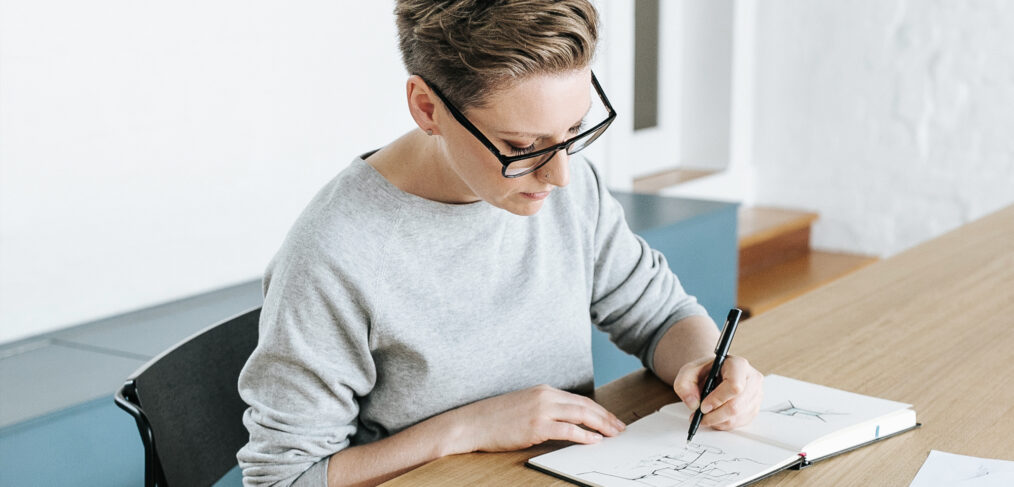
Design Drawing
Drawing is a key component of our creative design process. It’s no secret that I have a personal bias towards hand drawing and genuine admiration for people who can (seemingly) effortlessly produce emotive and beautiful design sketches. In a world full of beautiful renders and digital documentation, its value can sometimes be overlooked. Every designer uses drawings differently, but I don’t think you will find one who simply does not use it at all.
Drawing is more than a means of representation – it is a way to think as well as to communicate.
The process of drawing can be a direct connection to your thought process. Lines follow on from previous lines, they move and shift as the ideas form. It is a tool for thought, creativity and problem solving. Pencil lines on paper can capture idiosyncrasies, movement and character without being anywhere close to a fully developed design. It is an essential way to explore the sense of a building before the shape of the space has been determined.
The point of sketching isn’t to produce the final image on a piece of paper. It is a process of observing, creating, and exploring. One of sifting ideas through a process of expression, evaluation, correction, and re-evaluation. Sketching to develop a design can merge visible physical characteristics of a space with the more ambiguous perceived and sensory feedback.
“Drawing is a process of observation and expression, receiving and giving, at the same time.”
Juhani Pallasma, The Thinking Hand
Clients are often unaware of the volume of drawings produced during the design process. This mountain of pages are not all clear or legible. They can be sketchy and scratchy, drawn over and over while working through an idea. They overlap one another, often including notes and arrows to show circulation, views, sun, air, and sound. Through repetition and exploration these design gestures begin to solidify and become ready to be transferred to the finite and precise medium of digital representation. They are the drafts that gather thoughts in progress, not a finalised idea that will be presented.
Although the early design drawings are one of my favourite stages in any design project, as well as a tool for developing conceptual ideas, we use drawing in different ways throughout the design process:
Site analysis and recording existing conditions:
Diagrams and sketches are a great way of capturing information on site. They can be overlayed to see how all aspects of a site interact.
Space planning:
Using loose area sketches or bubble diagrams can explore how different areas of use, spatial relationships and occupation sit together. A space planning sketch is an illustration of design attributes rather than of form and can quickly show areas that are successful or unsuccessful when laying out areas.
Details on the go:
Even on site we use drawings to communicate and discuss details. It is a succinct way to problem solve and make sure that everyone clearly understands the solution.
By no means am I minimising the value of digital techniques as a communication tool or underestimating the huge gains in efficiency and precision that computer generated design tools have provided. There is a place for both in a robust and thorough process. A design needs to be allowed to move through its vague and creative stage before it is ready for digital evaluation and production.
…But I will always love a beautiful hand drawn design sketch.
